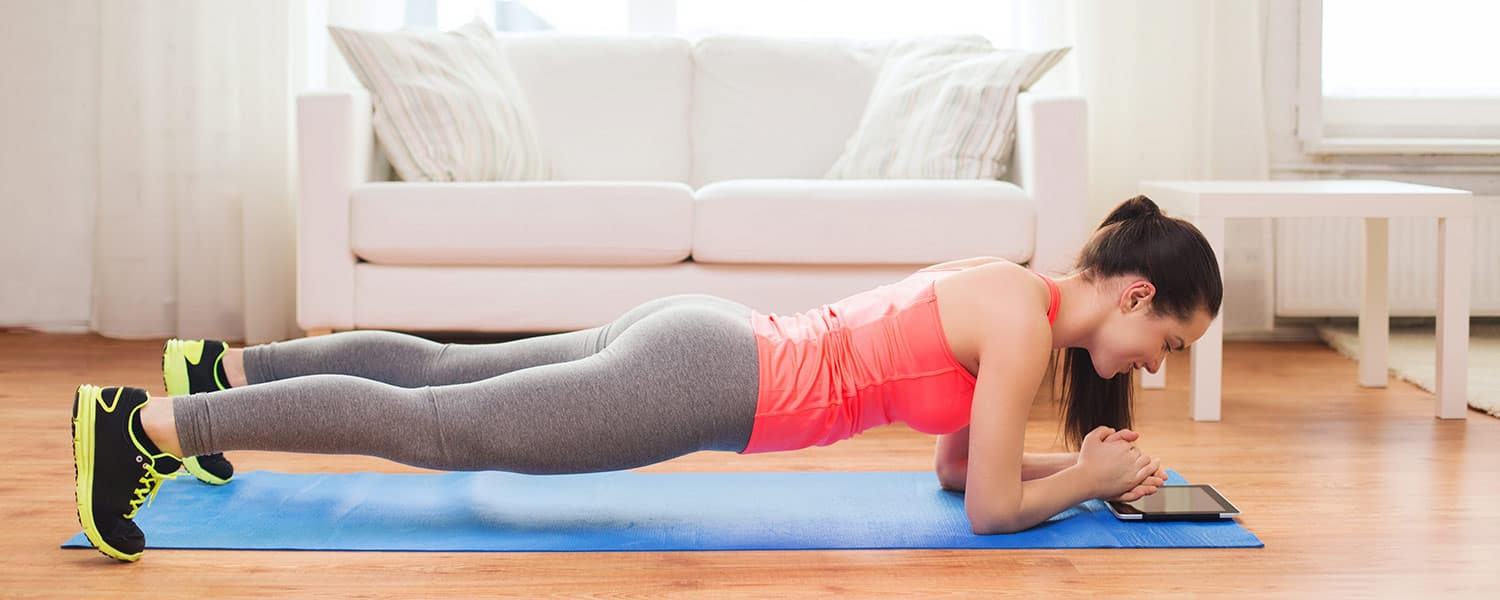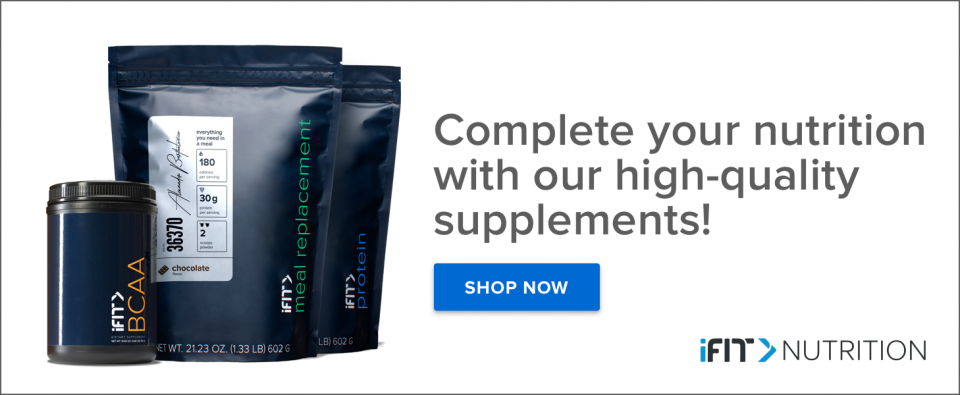
Planking commonly gets the reputation of being the king of core movements, but is it all it’s cracked up to be?
The Plank
The plank is praised for being the ultimate core movement, putting all other abdominal exercises out of business. And while it does have a lot to offer, don’t abandon all other core movements quite yet.
Isometric vs. Dynamic
Planking is an isometric movement, which means that all joints remain stationary. Because of this, strength can be developed, but not through a full range of motion. Dynamic core movements would include any exercise in which joints move through a series of different positions such as crunches, reverse crunches, in and outs, etc. A combination of both isometric and dynamic movements is recommended in order to maximize core strength as well as stability in a variety of core positions.
Stability vs Strength
One of the largest benefits of planking is the recruitment of stabilizing muscles. Planking works both the rectus abdominis (the 6 pack muscle), transversus abdominis (a stabilizing, supportive core muscle) as well as muscles that support the back (erector spinae), and shoulders. What this means is that planking will not only make you stronger, but you will be able to support yourself, and have more functional core strength and endurance. If you are looking for the rippling 6 pack, this will take more muscular development, so be sure to include dynamic movements into your routine as well.
Plank Variations
Forearm- This is the classic ‘standard’ plank. Support yourself on your toes, and
forearms, focus on keeping your body in a level position, and keep your head level, with
your eyes looking at the ground between your elbows and your fingertips. Make sure elbows are directly under your shoulders and hands are lying flat and parallel on the floor.
High Plank- The high plank is performed in the high push-up position, supporting yourself on your toes and palms. Keep hands directly under your shoulders and be sure to keep your pelvis in a neutral position, making sure you are not overly arching your back.
Side Plank- This can be done in either a high side plank or a forearm variation. Focus on keeping your body in a straight line, and lifting the hips high. Again, make sure your elbow or hand is directly under the shoulder to reduce strain on the joints. Stack your top foot directly on top of your bottom foot.
Knee to Elbow- In a high plank position, bring one knee in toward the chest, or all the way to the same side elbow if possible and hold it there. Maintain that position for 15-30 seconds each side.
Reverse Plank- From a seated position on the floor, place your hands on the floor behind your back, with your fingertips pointing toward your toes, pressing up into a reverse plank. Weight is help on your hands and heels. Keep your hips as high as possible, and pull your gaze up toward the ceiling.
Side Star- In a high side plank position (weight on one hand) lift the other arm up toward the ceiling, and lift the top leg as high as you can, making sure to not compromise form at the hips. This will challenge both balance and stability.
Low Hold Plank- From a high plank position, slowly lower until you are in low push-up position, with your elbows bent at 90 degrees. Maintain this low hold position.
The Consensus
Absolutely incorporate planks (along with the variations) into your workout routine. They are an incredible tool to strengthen, stabilize, and make those abs look unbelievable. What more could you ask for?
Becca Capell
iFit Head Trainer
WARNING: This post is not intended to replace the advice of a medical professional. The above information should not be used to diagnose, treat, or prevent any disease or medical condition. Please consult your doctor before making any changes to your diet, sleep methods, daily activity, or fitness routine. iFit assumes no responsibility for any personal injury or damage sustained by any recommendations, opinions, or advice given in this article.

You might also like

VennGo
Access exclusive pricing to iFIT’s top brands, only available through your VennGo program.
September 18, 2020

PerkSpot
Access exclusive pricing to iFIT’s top brands, only available through your PerkSpot program.
September 18, 2020

Dash to the Finish Challenge: End the Year Strong with iFIT
We’ve reached the final stretch in iFIT’s Finish Strong journey, a three-month commitment to staying active, motivated, and focused through the end of the year. You’ve built your consistency, and now it’s time for the grand finale: the Dash to the Finish Challenge.This month is all about pushing to the finish line while celebrating how far you’ve come. Embrace the season, whether you’re walking through the holiday markets in Germany or feeling the Jingle Bell Burn in the iFIT Studio.It’s time to finish strong!Complete the workouts from your selected Challenge level by December 31, 2025 and you’ll earn this digital reward for your Trophy Case. Here are this month’s Challenges:Treadmill and elliptical workoutsWalking and Running: Finish strong this month with walks and runs! You’ll explore the famous holiday markets in Germany with Casey Gilbert, complete holiday-themed walks and runs in the iFIT Studio with Ashley Paulson, John Peel, Richard Biglia, Jesse Corbin, Pearl Fu, and Jonnie Gale, walk across a glacier in Argentina with John Peel, and wrap things up in Nepal with Ang Tshering Lama.Join the Dash to the Finish Challenge: Walk & RunCycling WorkoutsCycling: Cycle to the finish line this month! iFIT Trainer John Wessling will lead you through an interval ride and an endurance ride alongside a dog sled team in Alaska. Then, you’ll head to Colorado with iFIT Trainer Keith Gabel to explore the Devil’s Thumb Resort. Finally, iFIT Trainer Ashley McIvor will join you in Norway for a HIIT ride and strength ride that is sure to get you in the holiday spirit.Join the Dash to the Finish Challenge: CyclingRower WorkoutsRowing: iFIT Trainers Alex Gregory and Susan Francia will take you on an epic adventure this month! Join Alex in Wales for endurance and speed rowing workouts, then head to Canada for quick but effective training with Susan, focused on HIIT, power, and endurance.Join the Dash to the Finish Challenge: RowingStrength workoutsStrength: Build strength in the iFIT Studio and in Iceland this month! Catch the incredible dynamic duos of Hannah Eden and Paulo Barreto, John Peel and Ashley Paulson, and Hannah and Ashley, and a solo workout with Shannon Cooper for fun, holiday-themed workouts. iFIT Trainer Jonnie Gale will round things out with two strength-focused workouts in the stunning backdrop of Iceland.Join the Dash to the Finish Challenge: StrengthDisclaimer: The primary purpose of this blog post is to inform and entertain. Nothing on the post constitutes or is intended to be a substitute for professional medical advice, prevention, diagnosis, or treatment. Reliance on any information provided on the blog is solely at your own risk. Always seek the advice of your physician or other qualified health provider with any questions you may have regarding a medical condition, and please consult your doctor or other health care provider before making any changes to your diet, sleep methods, daily activity, or fitness routine. Do not disregard professional medical advice or delay seeking it because of information available on this blog. iFIT assumes no responsibility for any personal injury or damage sustained by any recommendations, opinions, or advice given in this article. Always follow the safety precautions included in the owner’s manual of your fitness equipment.
December 1, 2025